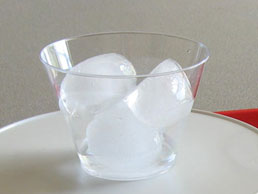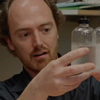3. Water to Ice

Investigations 6 - 9 focused on transformation of water from liquid to vapor and from vapor to liquid.
The next three investigations focus on what changes and what stays the same as water freezes and ice melts to water. Can ice and water actually be the same material when so many of their properties differ, and when the volume of a sample actually changes across transformations?
The key to answering this question is understanding the scale to which the word "material" applies. The tiniest particles of solid water (ice) are identical to the tiniest particles of liquid water; both are H2O. The properties of ice and water, at the visible level, depend on the way in which those particles are arranged at the particle level. Are they rigidly bonded together to take the form of a solid, or can they slip past one another to take the form of a liquid? In Investigation 12, students are introduced to the scientific model of matter. Through the use of a computer model, they see the role that thermal energy plays on the arrangement of particles, and that the individual particles remain unchanged across the solid-liquid transformations.
Investigations:
- Investigation 10: How are ice and water the same and different?
- Investigation 11: What happens to weight and volume when water freezes?
- Investigation 12: What changes and what stays the same as ice melts?
The Child and the Scientist

The Child:
The Challenges of Learning about Freezing/Melting

The Scientist:
What's important about freezing and melting?





